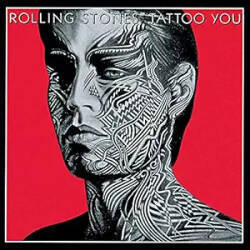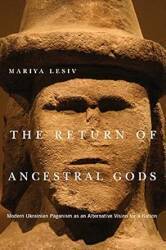
St. Marks Place
South side of St. Marks Place from First Avenue to Avenue A
We will follow the bicyclists across First Avenue for the easternmost block of St Marks Place. First Avenue runs south from the Willis Avenue Bridge into The Bronx near 127th Street. Its name changes to Allen Street at Houston, and then changes again to Pike Street from Division Street to its south end at South Street along the East River waterline. First and Second Avenues are the longest continuously named and numbered Avenues in New York.
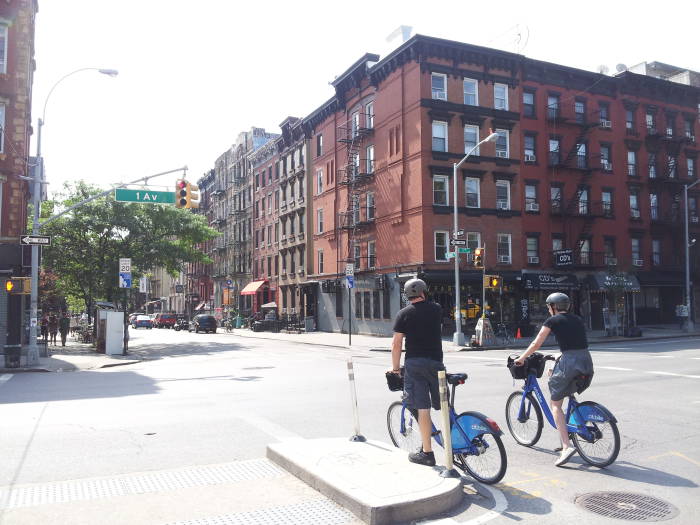
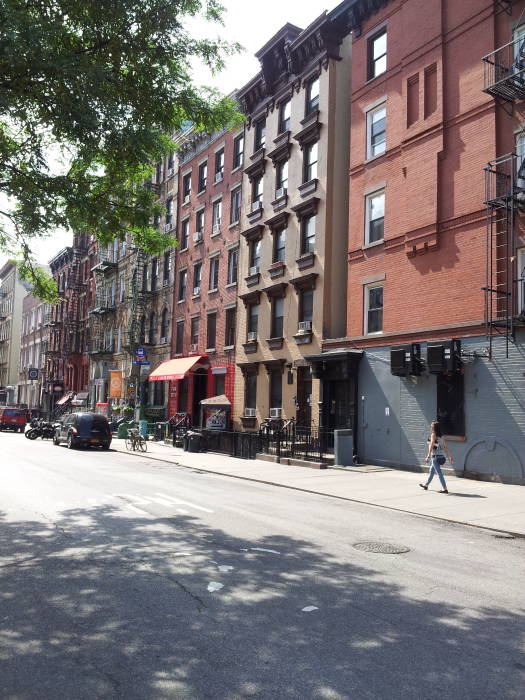
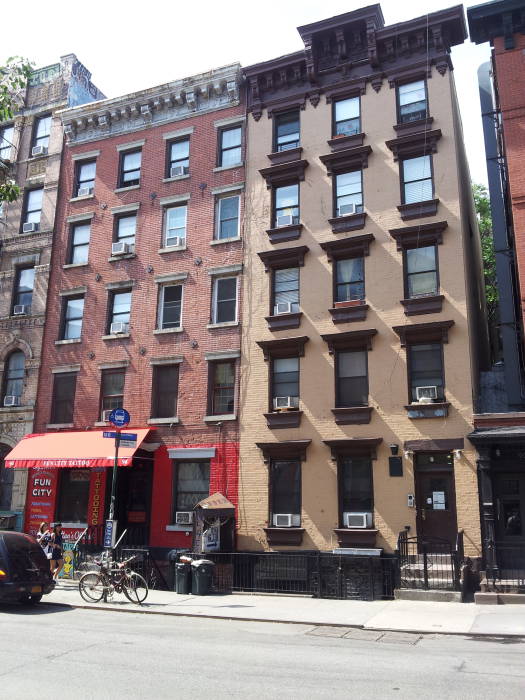
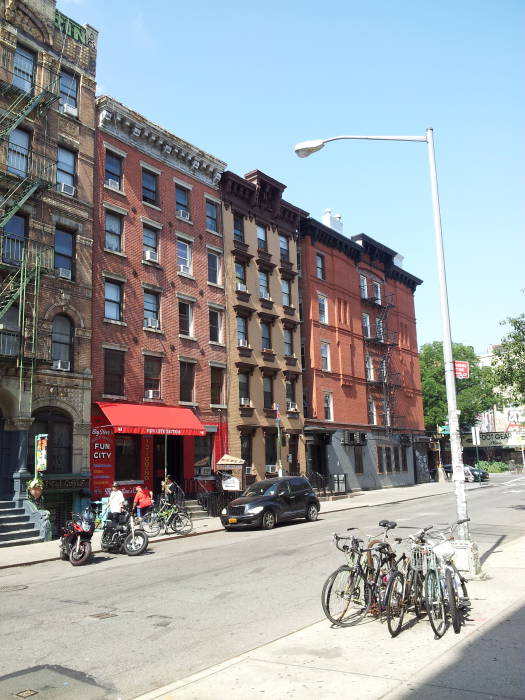
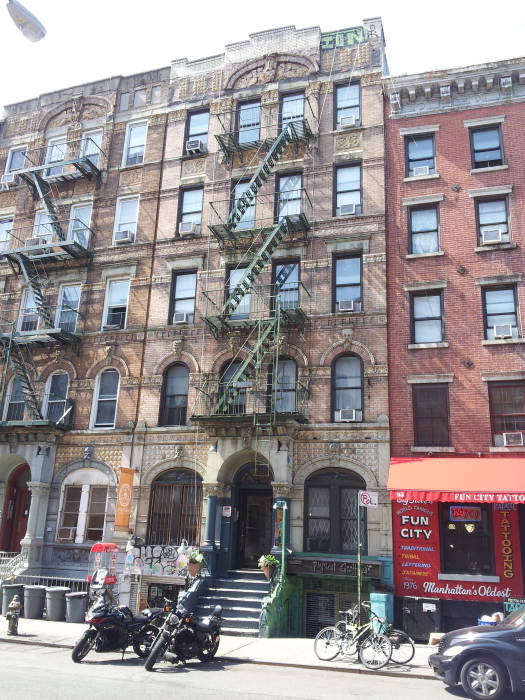
The pair of buildings at #96 and #98 were the model for the cover of Led Zepplin's 1975 album Physical Graffiti.
You can see that they were just the distinctive model for the cover but artistic liberties were taken. Like the removal of one floor!
The Rolling Stones' music video for Waiting on a Friend starts with Mick Jagger sitting on the stoop here waiting for Keith Richards, and then the two of them walk to the First Avenue corner, to the right in these pictures.
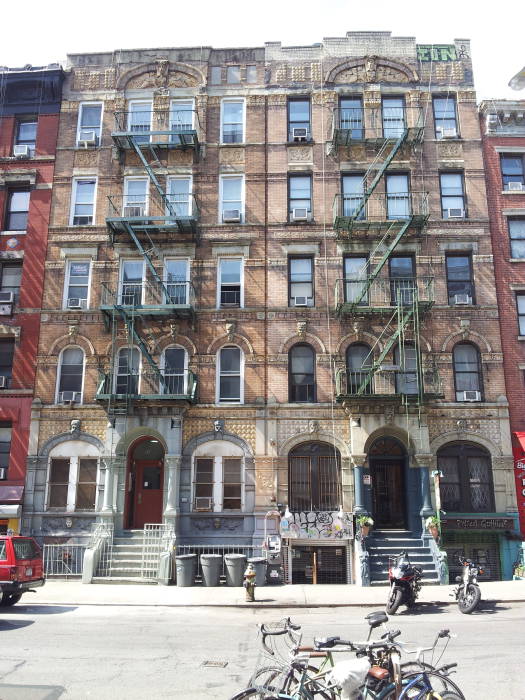
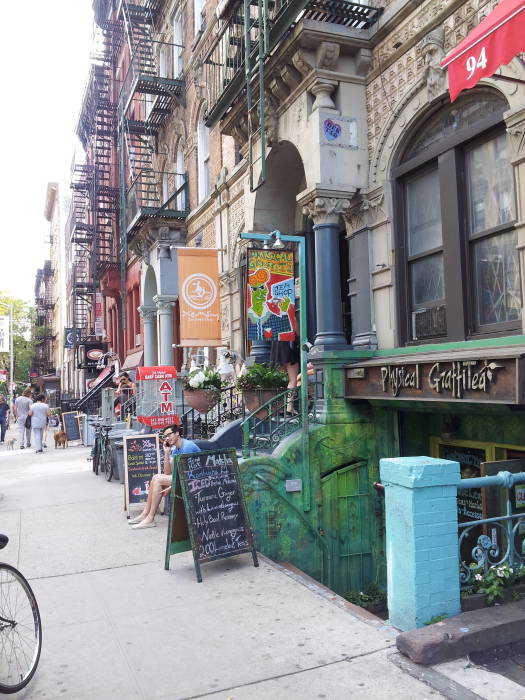
Physical GraffiTea offers several teas including holy basil, rosemary, nettle and lemongrass, and others. They also have kombucha on tap.
Kombucha is a beverage made by fermenting sweat tea, forming a "SCOBY" or "symbiotic 'colony' of bacteria and yeast." It is claimed that kombucha originated around 5,000 years ago in China, but the word only appeared in English around 1991. It did spread to eastern Russia by 1900, and from there made its way to Europe and later to the U.S. The Russians called it чайный гриб or chainyy grib, "tea fungus," or чайный квас or chainyy kvas, "tea kvass."
The yeasts contain one or more of the species Saccharomyces cerevisiae, crucial to brewing, winemaking, and baking since ancient times; Brettanomyces bruxellensis, native to the Senne valley near Brussels, Belgium, and used in that country to produce Lambic, Gueuze, Kriek, and other distinctively Belgian ales with slightly sour, earthy flavors; Candida stellata, formerly known as Saccharomyces stellata; Schizosaccharomyces pombe, used in traditional brewing such as African millet beer; and Zygosaccharomyces bailii. which is tolerant to acidic and other high-stress environments, it can consume acetic acid in the presence of fermentable sugars.
The bacteria is represented by several species but almost always Gluconacetobacter xylinus, which ferments the alcohols produced by the yeasts into acetic acid and other acids, increasing the acidity and limiting the alcohol content. The alcohol content is usually less than 1%.
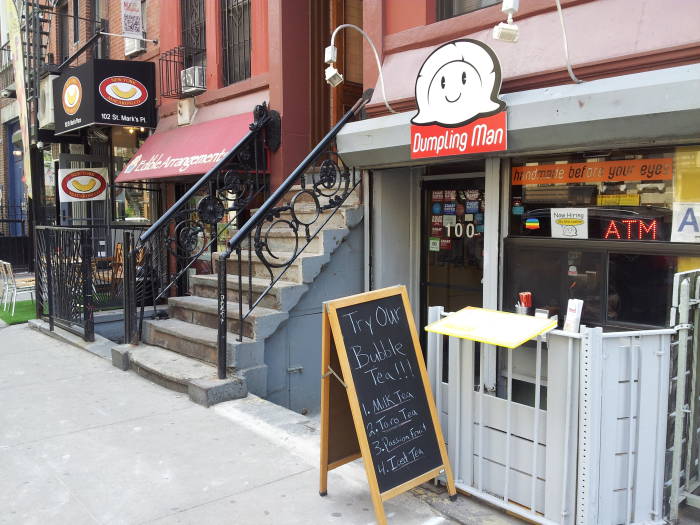
There is another outpost of the Dumpling Man, and then a pudding shop, and other specialized restaurants.
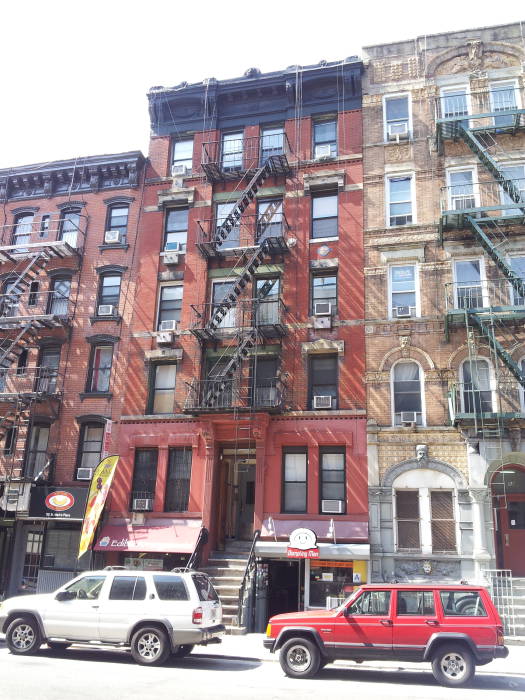
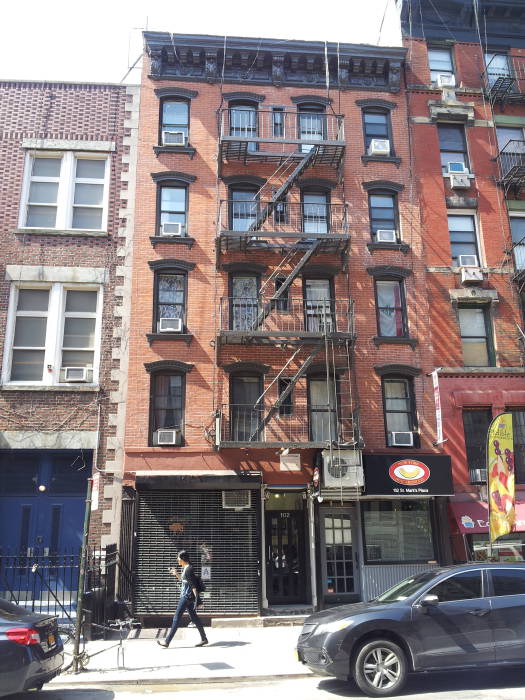
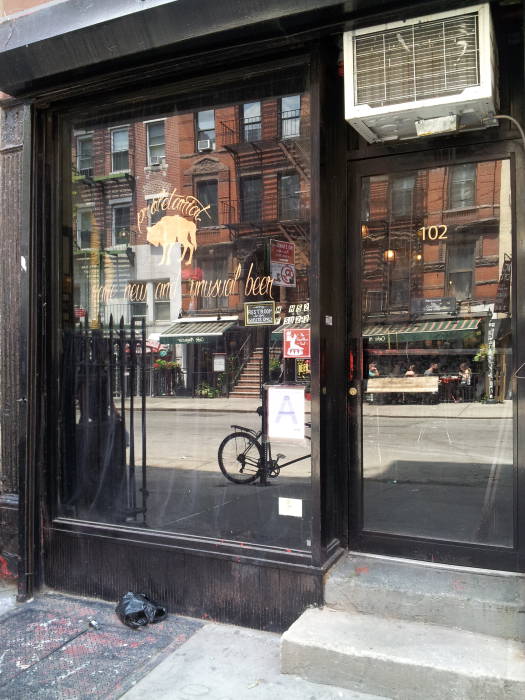
Proletariat is a craft and imported beer place with a rotating selection of unusual beverages from New York and around the world.
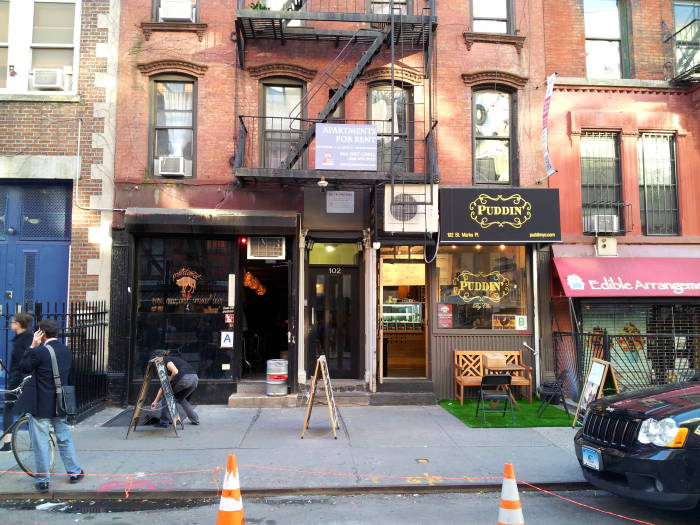
The Notre Dame School at #104 houses a Polish and Slavic Center.
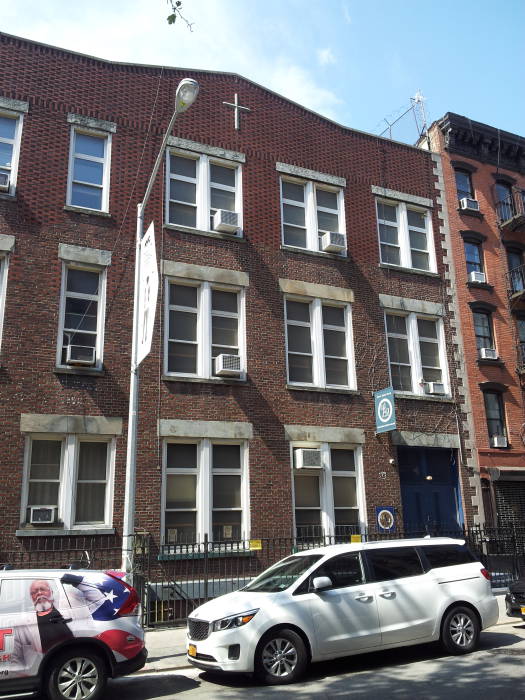
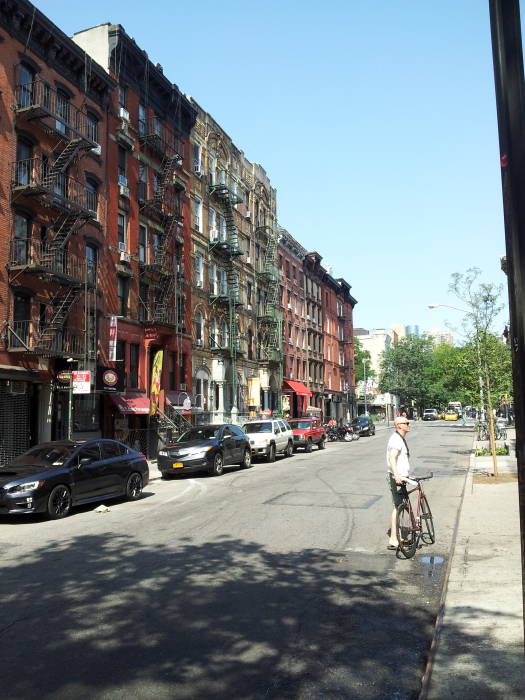
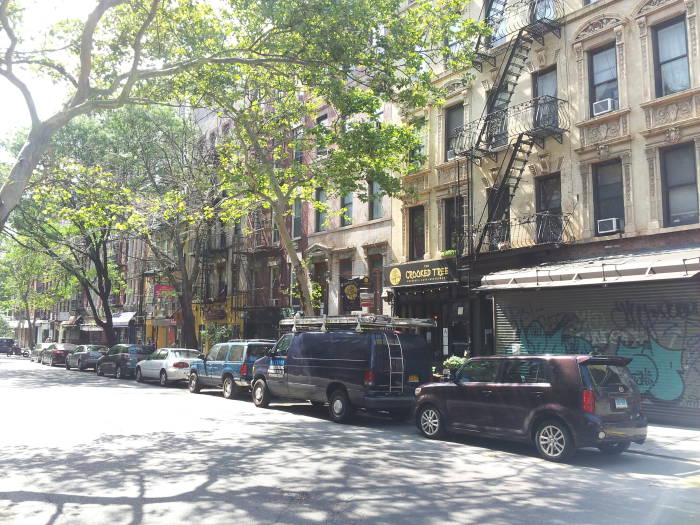
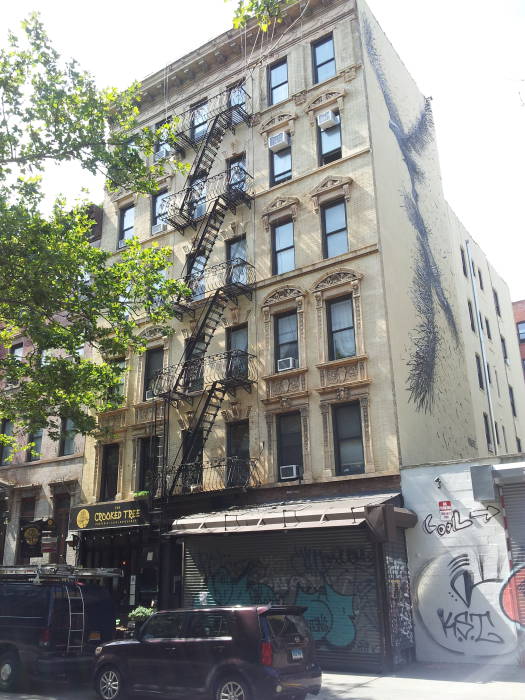
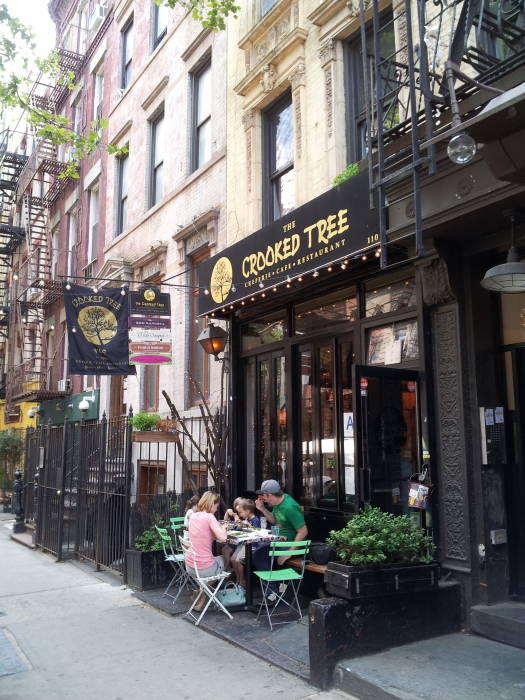
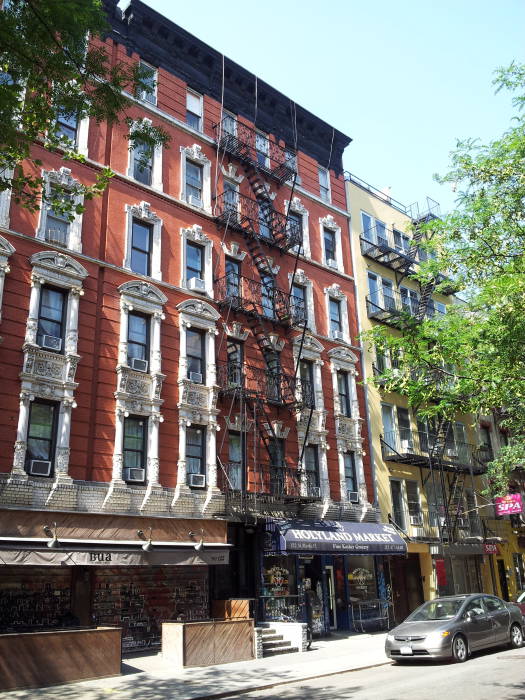
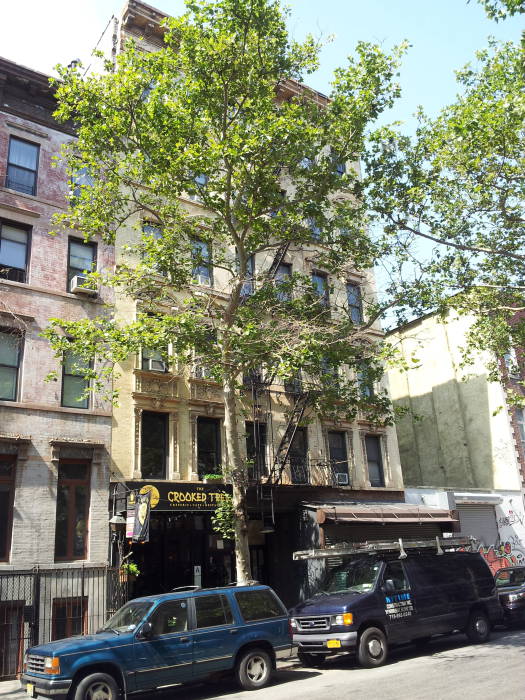
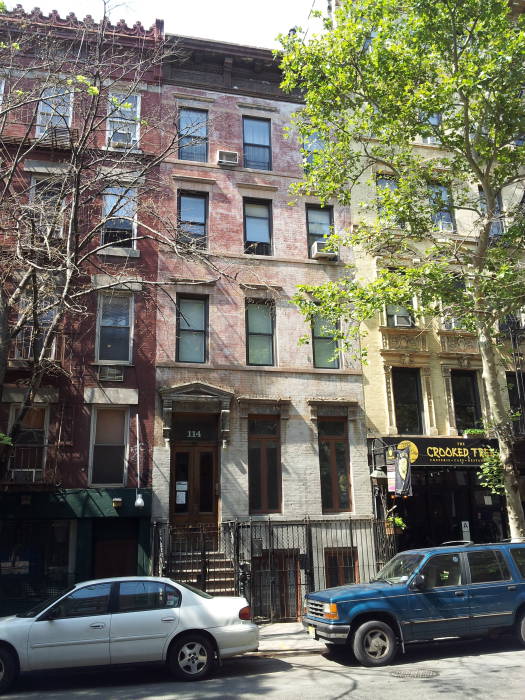
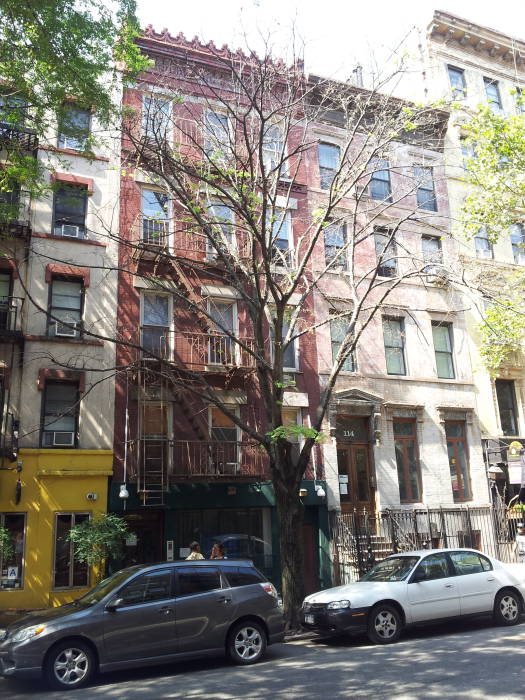
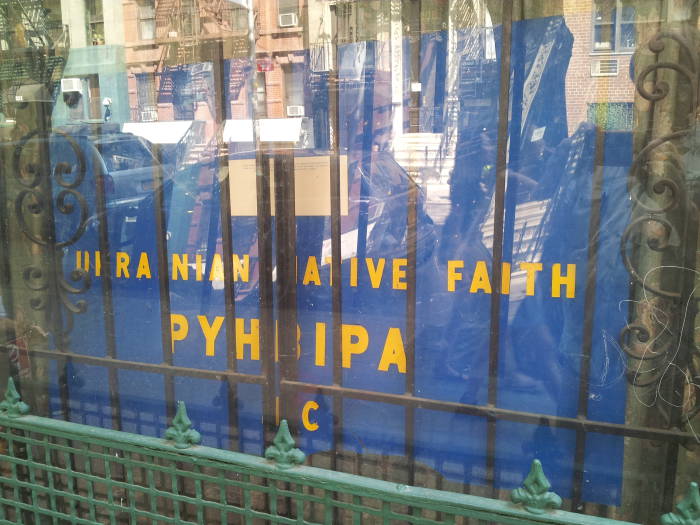
An interesting Ukrainian religious organization is based at #116 St. Marks Place. Рідна Українська Національна Віра or Ridna Ukraïns'ka Natsional'na Vira, acronymized as РУНВіра or RUNVira, is the Ukrainian branch of Slavic neopaganism or what is called the Slavic native faith. The general Slavic native faith movement is thought by its practitioners to be the continuation of the ethnic religion of the ancient Slavic peoples. It incorporates a pantheist and polytheist theology, including the worship of Slavic deities, with Slavic mythology and folklore. Ecology and respect for nature is a common but not universal theme. The Russian term Родноверие or Rodnoverie is often applied, from the Russian for "native faith". The Ukrainian equivalent is Рідновірий.
Род or Rod was a Slavic deity often mentioned in the Old Church Slavonic literature criticizing paganism, which in that time and place meant anything other than the early Russian Orthodox Church. Rod was associated with childbirth, and he was usually accompanied by Rozhanitsy (or Рожаныци), female deities or demigoddesses. Some sources describe Rod as a домовой, a domovoi or household spirit associated with venerated ancestors and family cults.
There are very few written sources describing pre-Christian Slavic beliefs.
That, of course, does not hinder their purported rediscovery.
The Pan-Slavism movement in the mid-1800s dreamed of unifying all the Slavic people. This led to widespread romanticized notions of a idealized realm existing across the Slavic speaking lands before the arrival of Christianity. Some traces of pre-Christian Slavic religion was discovered, but literary hoaxes including the Kraledvorsky Manuscript, Zelenohorsky Manuscript, the Prillwitz Idols, the Míkorzyn Stones, and other fakes were widely discussed and largely believed.
In 1934, Volodymyr Shayan, a specialist in Sanskrit at Lviv University, said that he had a religious experience while watching a folk ritual in the Carpathian mountains. He established a Ridnoviry movement that emphasized shared Indo-European culture origins and included some elements of Hindu belief.
Shayan emigrated to London at the end of World War II, where he argued in favor of the authenticity of the Book of Veles, which purports to be a text of ancient Slavic religion and history written on wooden planks dating from the 7th to 9th century AD and about 38×22 cm in size. It was allegedly discovered in 1919 and then lost in 1941. Most scholars consider it to be a literary forgery written in the 20th century. The earliest reference to it is a photograph and transcription in a Russian émigré newspaper in San Francisco in the mid 1950s. Its vocabulary includes medieval and modern Slavic words used in place of their known ancient equivalents, haphazard spelling and phonetics, and modern grammar at odds with known early Slavic languages. These and other glaring errors suggest that someone with some knowledge of ancient Slavic languages created it as a modern forgery built upon on ancient planks.
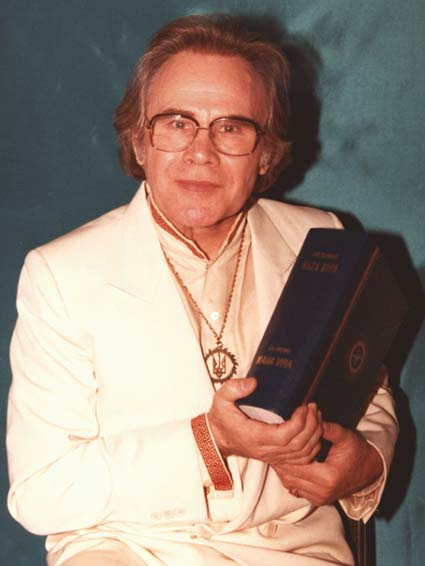
Lev Sylenko and his Maha Vira
Lev Sylenko, born in 1921, was a follower of Shayan before breaking away in the 1960s and developing his own alternative reconstruction of early Ukrainian religion. Sylenko's version is monotheism worshiping the solar deity Дажбог or Dazhbog.
Sylenko founded Рідна Українська Національна Віра or RUNVira in Chicago in 1966, and its current headquarters is in Spring Glen, New York, a village in the Catskills about 90 miles by road from the East Village. He wrote his Maha Vira in 1979. Editions vary from about 1,200 to 1,400 pages in length.
Since the 1960s, schisms have formed as smaller groups have broken away from RUNVira mixing other teachings with those of Sylenko.
Sylenko is unrelated (other than anagrammatically) to Trofim Denisovch Lysenko, Soviet biologist and agronomist from Ukraine who rejected Mendelian genetics in favor of a pseudoscientific theory that came to be called Lysenkoism.
Lysenkoism held that acquired traits could be inherited: Giraffe necks were long because ancestor giraffes elongated their necks slightly by stretching to reach higher leaves and then their offspring inherited these lengthened necks. This fit in with Soviet political theory, and in 1948 Stalin formally outlawed scientific disagreement with Lysenko's theory.
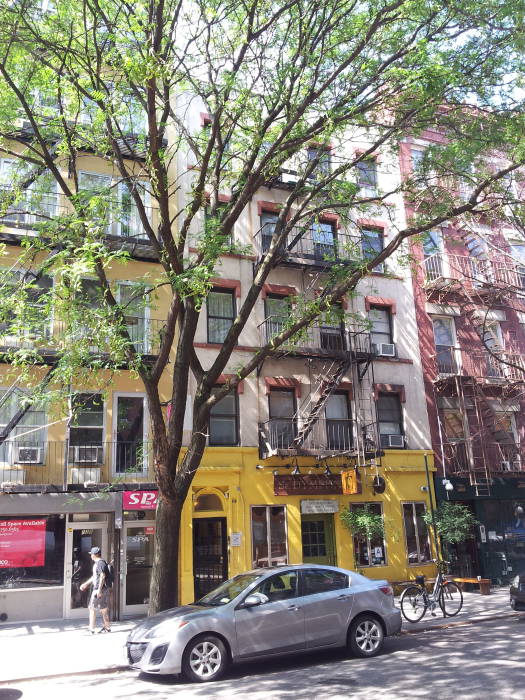

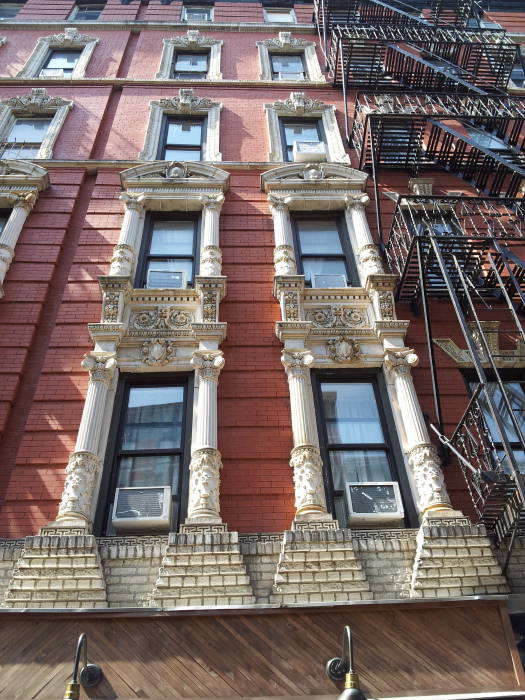
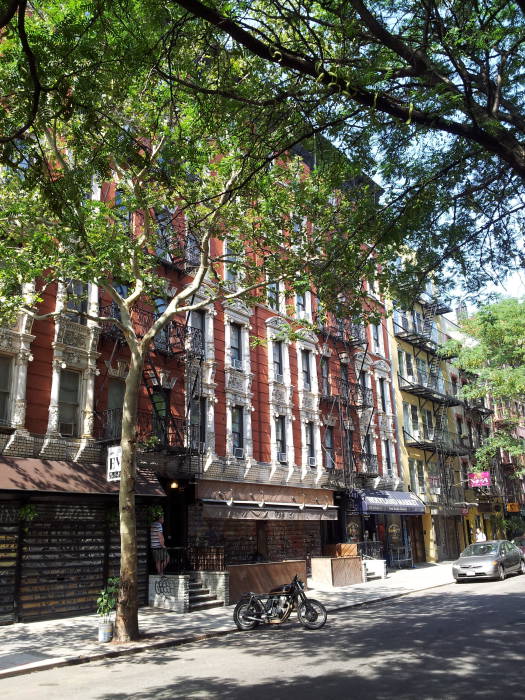
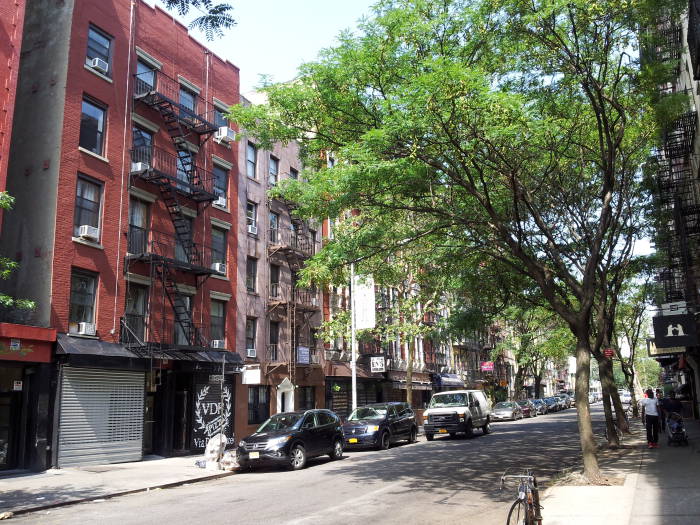
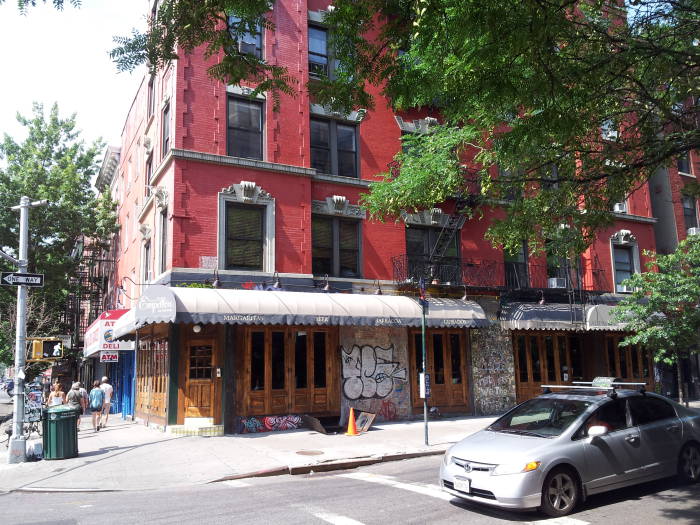
We have reached the east end of St. Marks Place and we can cross Avenue A into Tompkins Square Park. In the below pictures we are in the park looking back the length of St Marks Place.
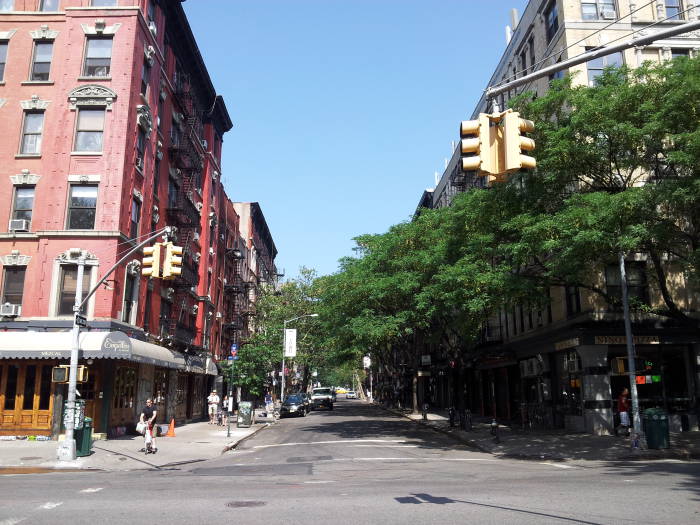
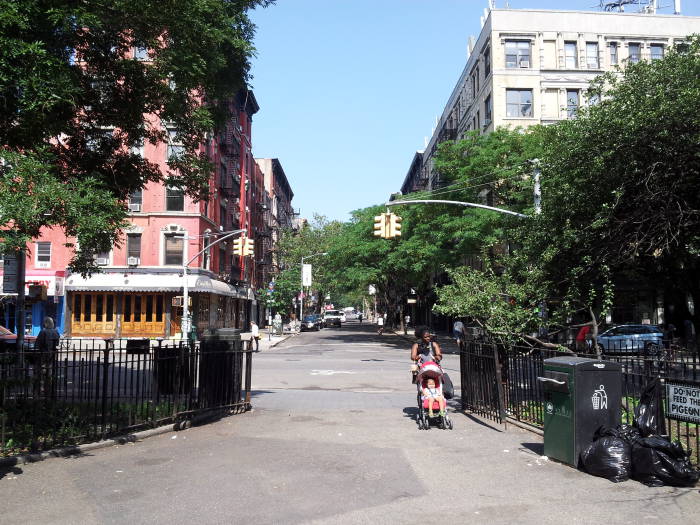
Tompkins Square Park lies between Avenue A and Avenue B on its west and east, and 7th Street and 10th Street on its south and north in what is called the Alphabet City section of the East Village in Manhattan. It opened as a park in 1850, and has been the site of a number of uprisings through the years. The protests started in 1857, when immigrants protesting unemployment and food shortages were attacked by police.
The Draft Riots of 1863 were the largest civil insurrection in the United States. The riots started when working-class men, primarily ethnic Irish, protested how wealthy men could pay a $300 commutation fee to hire a substitute and avoid being drafted to fight in the American Civil War. This turned into race riots with white rioters attacking blacks, ransacking and destroying public buildings, and burning the Colored Orphan Asylum at Fifth Avenue and 44th Street to the ground.
The Tompkins Square Riot of 1874 started with a demonstration by over seven thousand unemployed workers. About 1,600 policemen were deployed and forcibly ejected the crowd from the park.
In 1877, five thousand people gathered in the park to listen to revolutionary Communist speeches, and then fought with the National Guard troops sent to disperse them.
The park was a little quieter for about a century, until the 1960s and demonstrations against the Vietnam War.
By the 1980s the park was a high-crime area, a center for drug dealing and heroin use, and a large encampment of homeless people. Police attempted to clear the homeless encampment out of the park in August 1988, leading to a riot.
The park was closed to the public for a little over a year from early June 1991 until late July 1992, primarily for restoration but also to keep the homeless out of the park and to reduce neighborhood tensions.
USA Travel DestinationsBack to International Travel

